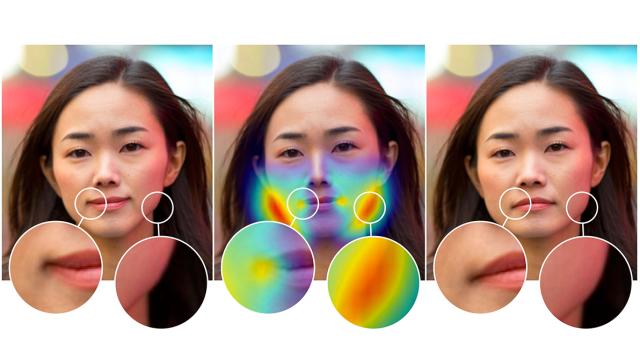Photoshop has long been one of the primary sources of manipulated photos and imagery, so in an attempt to counter the fake news epidemic, Adobe has also started developing tools that can both detect when an image has been manipulated, and reverse the changes to reveal the original.
This is far from the first time Adobe has come up with ways to try and counter misuse of its products. Already built into Photoshop are image recognition tools that prevent scans or photos of certain bank notes from being opened at all, although it’s far from foolproof.
This new detection tool has also been designed with a hyper-specific task: To detect when a face has been warped and subtly manipulated using Photoshop’s own Face Aware Liquify tool, which makes it relatively easy to change the size of someone’s eyes, nose, mouth or entire face.
To make it more reliable than Photoshop’s currency detecting tools, Adobe researchers collaborated with colleagues from UC Berkeley to train a neural network on a set of before and after face images that had been automatically warped using the Face Aware Liquify tool, as well as a set of headshots that had been edited by an actual artist using the same tool.
The researchers first tested how adept human beings were at spotting manipulated headshots by showing a group of test subjects two images at a time, and asking them to identify which of the pair had been edited.
Disappointingly, the human subjects were only able to guess which headshot had been edited 53 per cent of the time, which would have yielded a comparable outcome had they just outright randomly guessed.
The neural network, by comparison, was able to find the manipulated image 99 per cent of the time. Furthermore, the detection tool was able to tell where and how a face had been warped, and even undo those changes and revert the photos to their original state.
Those are promising results, but this neural network has a long way to go before it could be unleashed upon the billions of photos floating around the internet right now.
One of the most useful aspects of Photoshop is that there are countless ways to manipulate and edit a photograph; artists can use any workflow that suits their talents or task. That makes spotting every last manipulated photo a daunting task, but based on how far the capabilities of neural networks have improved, even over just the last year, it’s no longer an impossible one.
